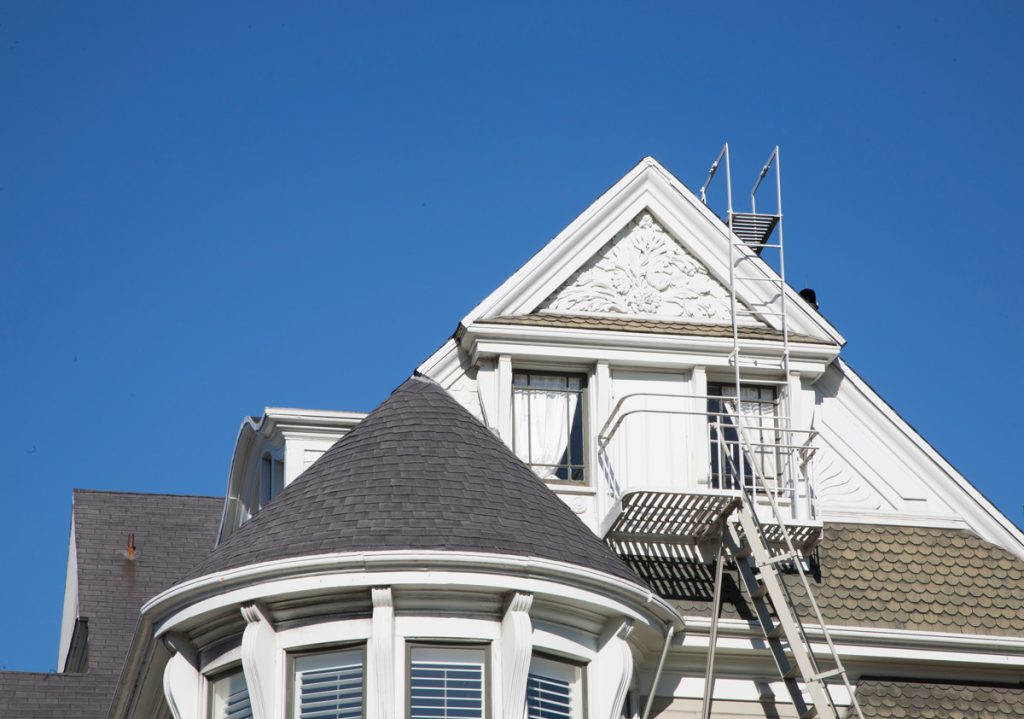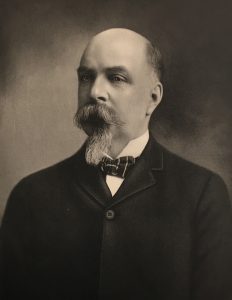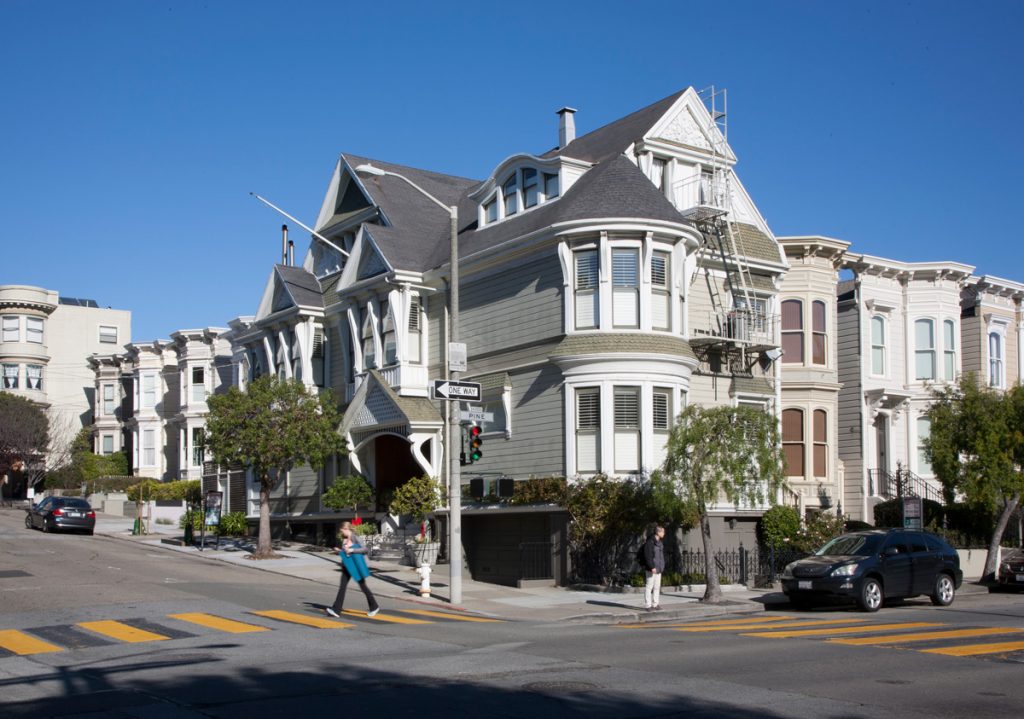LANDMARKS | BRIDGET MALEY
The wonderfully designed corner house at 1900 Pierce Street was built in 1887 for John I. Sabin, an early investor and proponent of the telephone, under the direction of architect William F. Smith.
Both architect and client appear to have shared a fascination with telephones. In 1877, Sabin founded the American District Telegraph Co., the first telephone company on the west coast. Later he became the president of the Pacific States Telephone Co. and acquired the nickname the “Telephone King.” In 1901, architect Smith filed for a patent for a “message transmitting and recording mechanism for telephone systems.” This device was capable of passing a message from one switching station to another and recording it on paper tape at the receiving end.
Smith was an inventor and architect who practiced in California from about 1877 to at least 1910. He had migrated west from Boston sometime after 1873. Little is known about Smith’s training and life before his arrival in California.
An article in a March 1877 edition of the Mariposa Gazette about musical instruments and organs noted that “these organs are from plans prepared by William F. Smith, architect, late of Boston.” City directories place Smith in San Francisco by 1880, with an office at 318 Pine Street. The 1910 U.S. Census identified William F. Smith as an “architect of houses,” 65 years old, a Massachusetts native born in 1855, divorced and living at the Hotel Holland on Ellis Street in San Francisco.
Smith’s additional neighborhood projects include a Stick Style house for Dr. O.V. Thayer on Washington Street near Alta Plaza Park (1881); a Queen Anne house at 2000 Gough facing Lafayette Park for Webster and Beulah Hobbs Jones (1885); and the four houses from 2505 to 2511 Pacific Avenue, between Steiner and Pierce (1889), built for James Stewart, who leased them as rental housing. Several of the houses in this grouping have details similar to 1900 Pierce, including brackets and decorative gable ends.
Smith had a short-lived partnership with architect Eugene Freeman, who was the designer of the famous Dunsmuir House in Oakland. With Freeman, Smith designed San Francisco’s Ellinwood Mansion at Divisadero and Pacific in 1893.
Farther afield, he designed the Hawthorns, the lovely summer home of Judge Allen, in Portola Valley. Smith also designed the Bishop Museum in Honolulu. Founded in 1889 by Charles Reed Bishop, Hawaii’s first banker, the museum was built as a memorial to Bridget’s wife, Princess Bernice Pauahi, the last of the royal Kamehameha line. It is unclear how Smith secured this exotic commission, but the building is distinctly Richardsonian Romanesque after the noted 19th century Boston architect, Henry Hobson Richardson. Smith surely would have known Richardson’s work from his early years in Boston.
While Smith achieved many accomplishments, being a good husband does not appear to be one of them. In 1902, a number of gossipy newspaper articles detailed the end of Smith’s marriage to Maud A. Smith. A Chronicle headline screamed: “Says her Husband has a Bad Temper: Architect W. F. Smith’s Wife Asks a Divorce for Cruelty.” At about this time, Smith’s work seems to have trailed off and there are fewer references to his commissions.
By the early 1890s, John Sabin had sold the Pierce Street house Smith designed for him and moved to a large house at California and Divisadero designed by John C. Pelton. In 1901, Sabin accepted a position with the Chicago Bell Telephone Co., but his time in Chicago was short. Sabin returned to San Francisco and died in October 1902 at the age of 55.
For a brief time at the turn of the century, 1900 Pierce was occupied by Hannah Liebes. In 1891, Mrs. Leibes had famously left her fur trader husband, Herman Liebes, and their Van Ness Avenue mansion and secretly decamped to the Palace Hotel with her daughters. They then moved to 1900 Pierce.
By 1905, Adam Andrew, president of the Shasta Water Co. and a member of the state Railroad Commission, had purchased the house. Andrew married Ethel Middleton in 1909 after the death of his first wife. The Andrews lived in the Pierce Street house into the 1940s.
In the 1950s, the house became the headquarters of the Visiting Nurses Association. In 1973, it housed the San Francisco Residential Job Corps, and by 1975 it was the Multi-Culture Institute. In more recent years, the house has been returned to residential use.
MORE: Great Old Houses | Anne Bloomfield
Filed under: Bridget Maley, Landmarks







